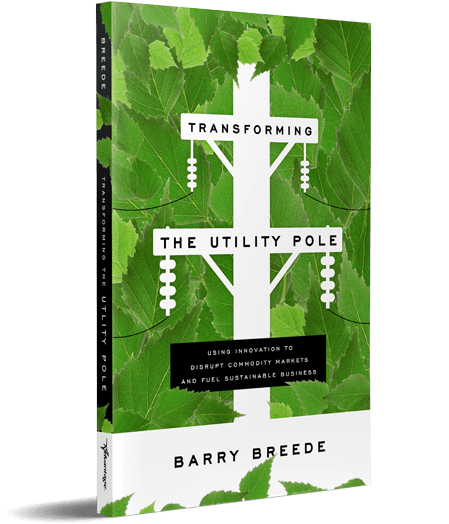For many years, Shenandoah Valley Electric Cooperative, a Virginia-based utility located inside the confines of Shenandoah National Park, disposed of their used poles by having a local waste hauler take them to a nearby landfill. But, one day we received what might best be termed an emergency call from the co-op. The local landfill had run out of space; the co-op was told they needed to find a new home for their used poles, and suddenly the utility needed help in identifying an alternative disposal option. Shenandoah Valley ended up becoming one of the first customers I worked with.
This utility’s response to a disposal dilemma reflects what we see regularly across the country. First, few utilities have a defined long-term strategy for wood disposal, and most have instead become reliant on what has historically worked best and cost the least for them: landfilling. Second, due to the lack of a disposal strategy, few utilities have a good understanding of what other disposal options may exist for them.
Every municipality and utility will have unique needs. And while the EPA governs the classification of pole waste as non-hazardous, regulations governing what specific disposal options are available locally vary from state to state. The result is that disposal solutions that are available in Massachusetts and Florida may not be available in Missouri or Washington.
The following are the options available that some municipalities are currently leveraging in order to reach a greater level of sustainability. Each have their benefits and drawbacks:
Repurposing – The first, most straightforward method is what we might call simple reuse or repurposing. In the past, going back decades, this actually was a much more common way of disposing of old poles. In rural areas in particular, a utility would simply chop a pole into manageably-sized pieces and then sell them, give them away, or even just leave them out for Farmer Fred to pick up and use as a fence, build a retaining wall, or serve myriad other needs.
Landfill-to-Gas (LFG) – One relatively low-cost semi-alternative to landfill is to deploy the material housed in the landfill itself as an alternative energy source. As landfill operators have started to become tapped out in terms of the space they have to offer, many have invested in accessing an alternative revenue stream by converting their landfills into plants that produce energy by taking in the methane gas coming off of the landfilled material.
Waste-to-energy (WTE) – These facilities take raw material waste and, as the name suggests, convert it to energy by incinerating it at a high temperature. This either generates heat or electricity or provides boiler fuel to generate steam or gas energy. Most of the raw material for these facilities comes in the form of municipal solid waste—in other words, garbage. Typically, a facility will contract with a municipality to collect its garbage to fuel the plant. However, many facilities will also take certain types of ground-up treated wood (e.g. creosote and/or penta treated wood) as fuel. A facility that takes wood will work similarly to a landfill, charging a fee, analogous to a landfill’s tipping fee, to accept and dispose of the material.
Biomass – Similar in ways to WTE, biomass energy production involves incinerating an organic material to fuel boilers to provide power for very energy-intensive industries, such as the manufacture of cement. It largely shares the environmental benefits of WTE regarding the energy captured, and thus the value generated, from the waste. It also has the upside of being more desirable to the utility from a cost standpoint: instead of having to pay a facility (whether landfill or WTE facility) to take the wood waste, biomass facilities are actually much more reliant on this type of feedstock as a fuel source and will thus pay suppliers for the material.
None of the solutions available provide a complete answer for utilities and their municipalities. However, the need for options other than the traditional landfill solution is increasing exponentially. Learn more about how to integrate sustainable solutions within your utility in my latest book, Transforming the Utility Pole: Using Innovation to Disrupt Commodity Markets and Fuel Sustainable Business.

